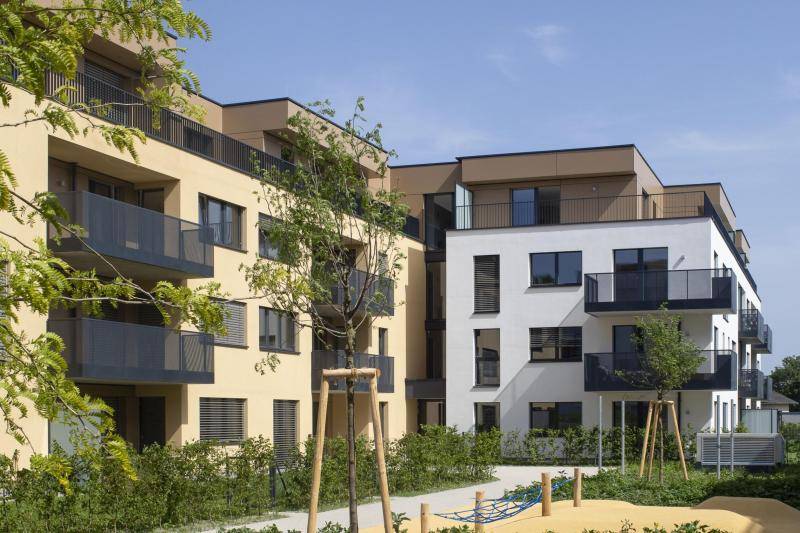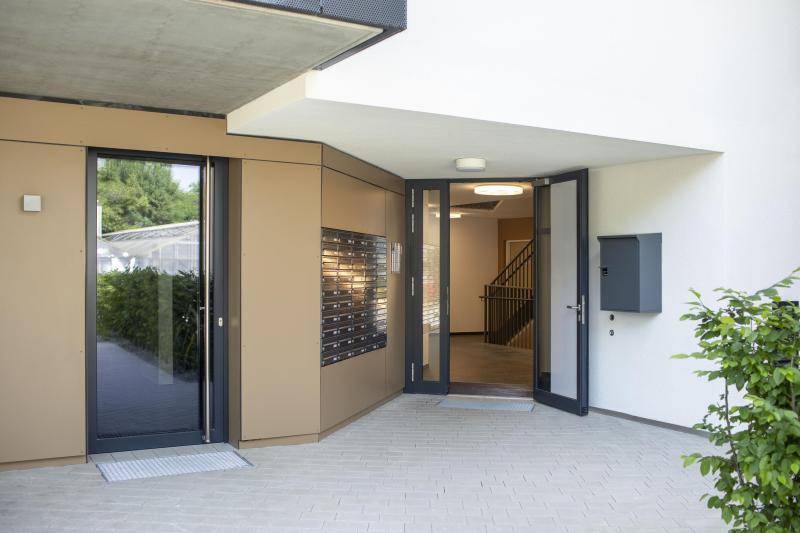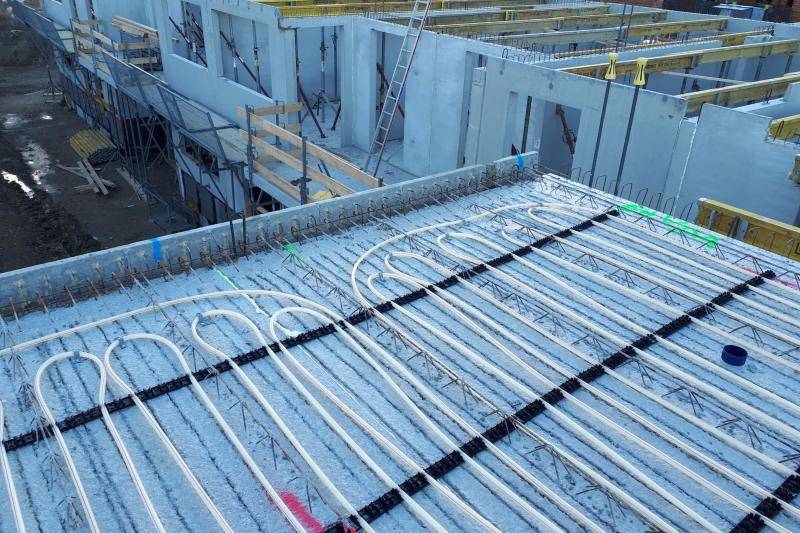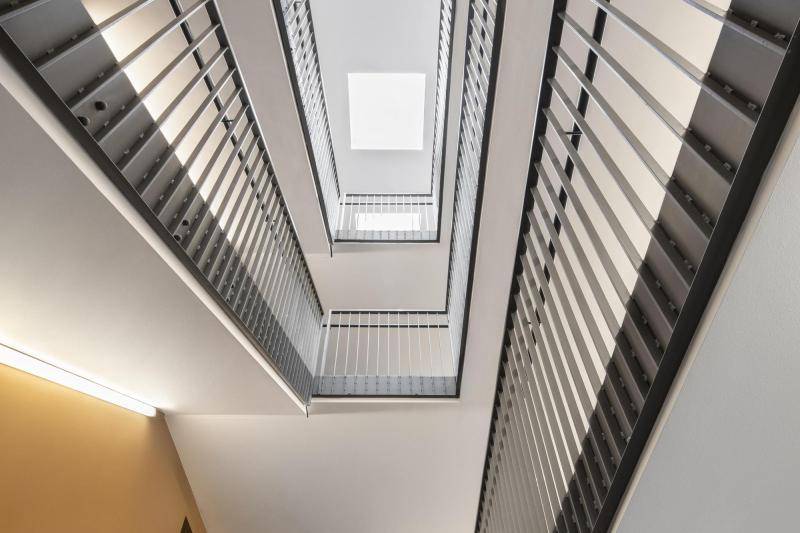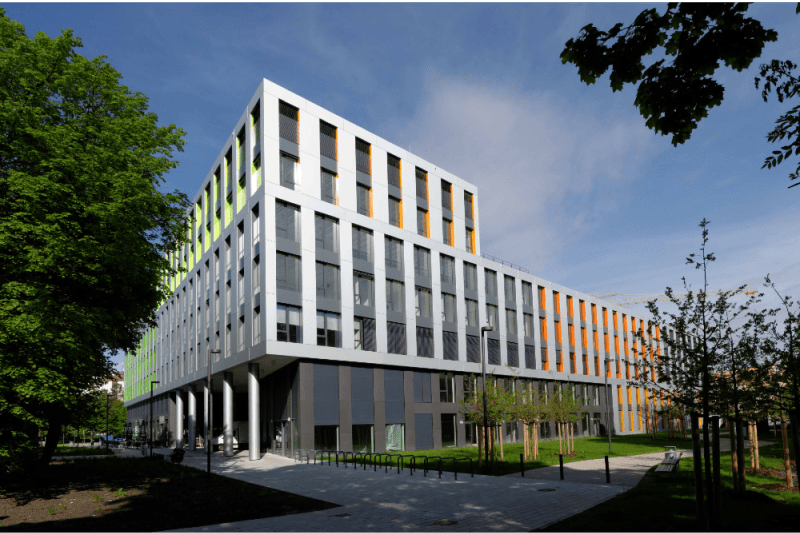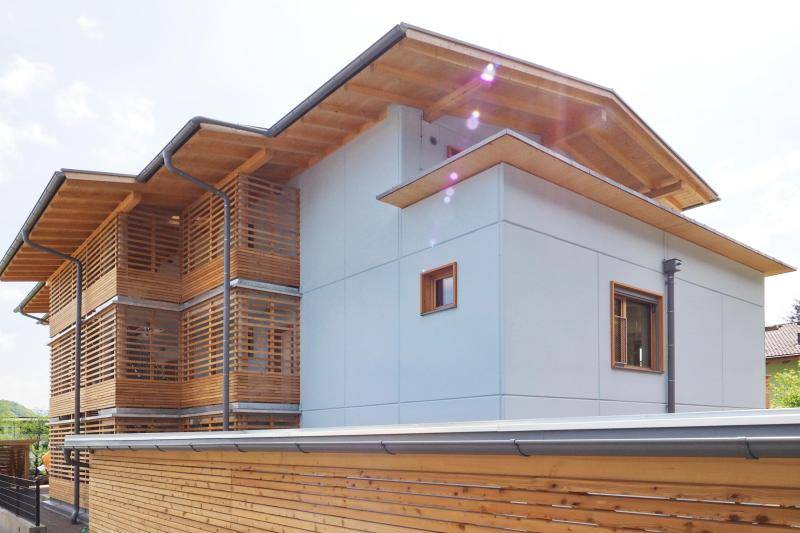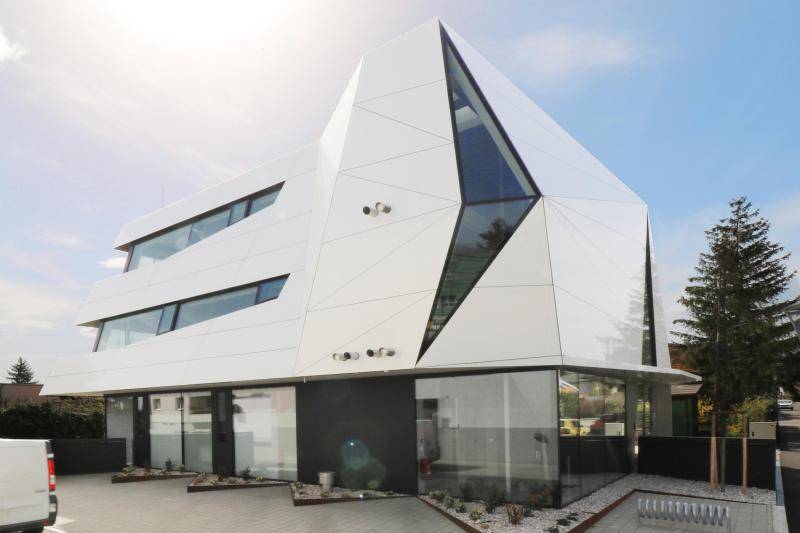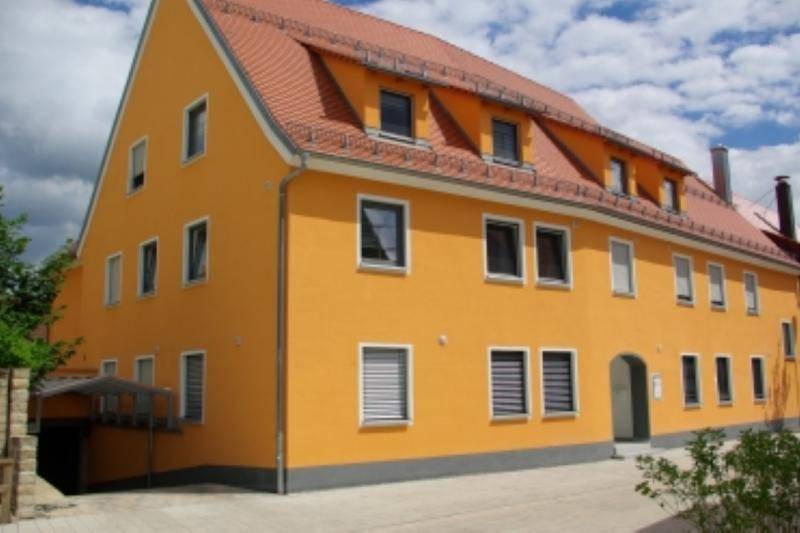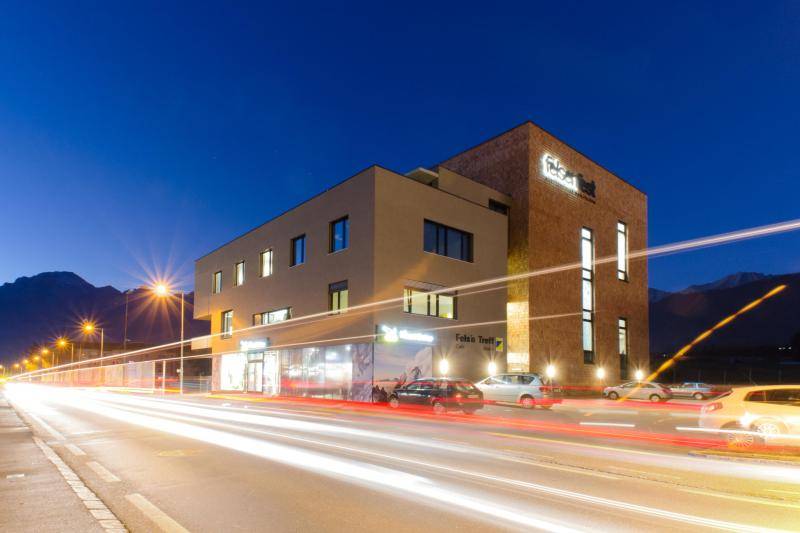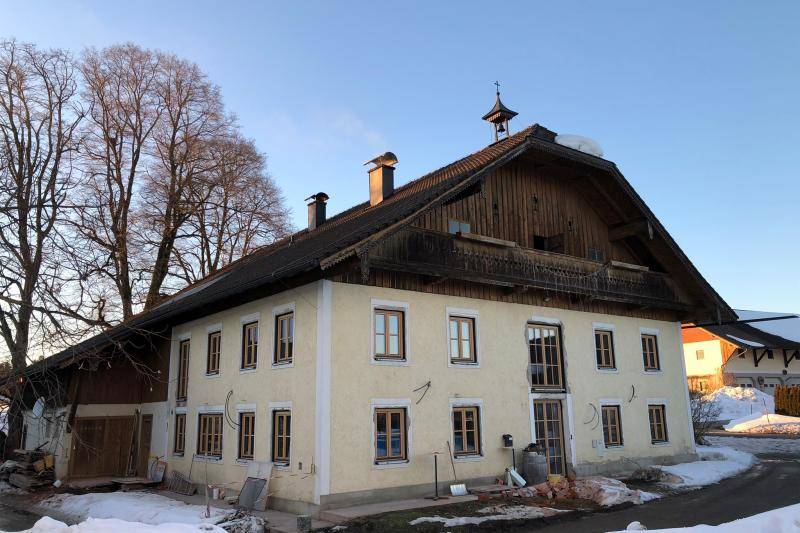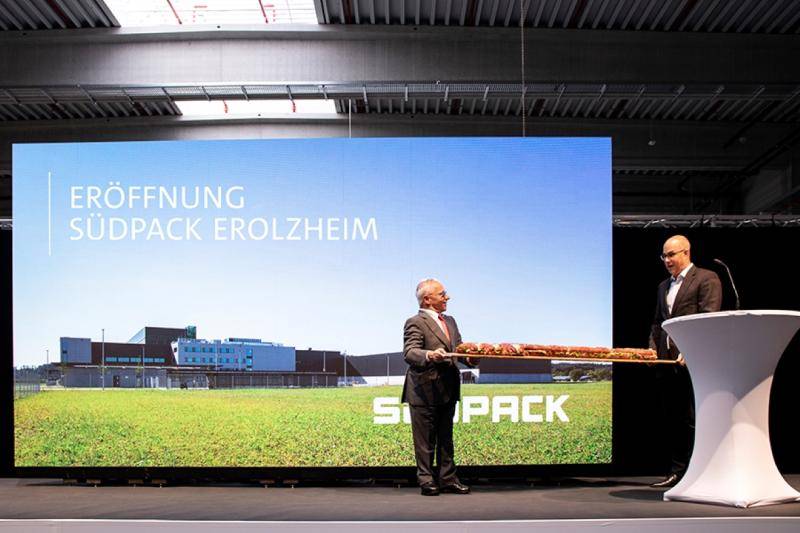Residential Kugelmanngasse
In the new district area in Vienna's 23rd district, 49 privately financed condominiums were built with building component activation. The developer is using this energy-efficient system for the first time and is enthusiastic about the cost-effectiveness and simplicity of the system.
Mischek Bauträger Service GmbH
2019
Andreas Klos
28 kWh/m²a
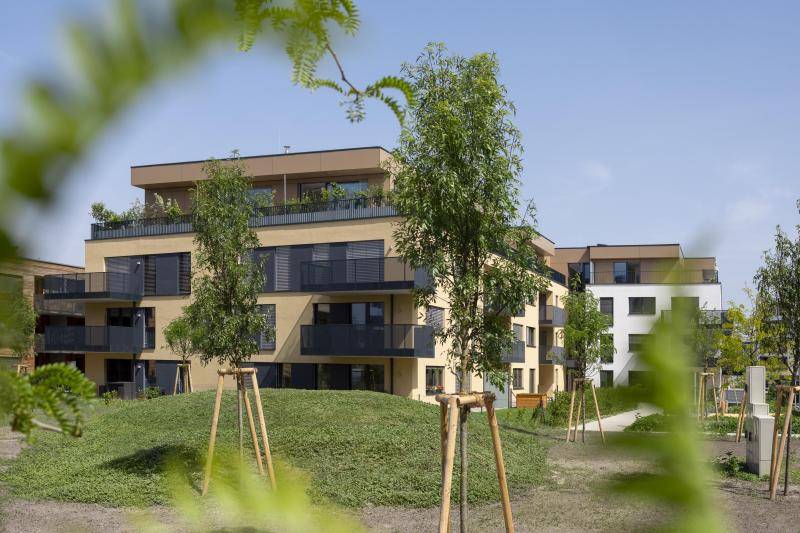
The Kugelmanngasse residential building is located on the edge of the generous city district expansion in the 23rd district. Where fields and industry used to be located, a new urban quarter with around 2,000 apartments is being built at a rapid pace, close to the subway and surrounded by numerous nature recreation areas. With the residential building, Mischek ventured for the first time over an energy system with component activation; all ceilings were equipped with pipes for heating and cooling.
The 49 privately financed condominiums, in the midst of green parks between the private Schlossgarten and the new Muliarplatz in Liesing, offer a choice of versatile floor plans ranging from two to five rooms. Whether loggia, balcony or private garden, all residential units have open spaces. There is a communal sun deck, which invites you to relax on warm sunny days, a community room and a herb garden. Directly in front of the residential building, the 3,000-square-meter Muliarpark was built, which offers children as well as young people plenty of space for outdoor exercise.
In addition to thermal component activation, natural energy sources such as geothermal energy are used. The concrete mass is used as heat storage and heating surface. High comfort due to the uniform heat distribution as well as large-area radiant heat, low operating costs, no radiators and high comfort due to draught-free (no air circulation). The heat delivery system works via underfloor heating, with component activation and towel radiators in the bathroom of each of the apartments. Each apartment has extra room controllers, there is one reference sensor per occupancy unit. The system was built in change-over operation.
(Text: Gisela Gary; Z+B magazine; in shortened form)
